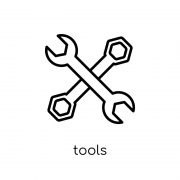Penalty-Free Withdrawals and Hardship Distributions From a Self-Directed IRA
Rookies know the rules, they say; veterans know the exceptions. So it goes with a Self-Directed IRA: The normal situation is that anyone who wants to pull money out of a Self-Directed IRA before the age of 59½ must pay a 10 percent excise tax to the Internal Revenue Service.
The same goes with self-directed Solo 401(k)s in most circumstances. But the Self-Directed IRA has a number of ‘hardship’ exemptions that allow investors to withdraw money – that is, take an early distribution of their Self-Directed IRA assets – that other types of accounts and annuities don’t qualify for.
Higher Education
You can take up to $10,000 from a Self-Directed IRA in order to pay for higher education for yourself or a family member without incurring a 10 percent penalty. You’ll still have to pay any income tax owed on the money, but you’d have to pay the income tax sooner or later anyway, unless the money is in a Roth IRA account. Employer plans, such as the 401(k), don’t qualify for the higher education exception to the 10 percent excise tax on early withdrawals.
If you have money in a 401(k) account and you want to use it for higher education expenses, consider rolling it over to an IRA first, if your plan allows it, and then taking your withdrawal from the IRA, rather than the 401(k)
Substantially Equal Periodic Payments
You can take money from an IRA or Self-Directed IRA if you commit to taking it in the form of substantially equal periodic payments over the rest of your life expectancy, or the joint life expectancies of you and your spouse. Section 72(t) of the Internal Revenue Code spells out the rules. This is a popular way for those who have amassed substantial retirement savings to retire early. You must use an IRS-approved mortality table to calculate your maximum withdrawal. Again, you’ll still pay income taxes on the income you take, except for Roth IRA withdrawals (provided the money has been in the Roth IRA for at least five years). The rules can be tricky, so don’t make any moves without first consulting with your tax or financial advisor.
Death, disability and health care expenses
If the IRA owner dies, or becomes permanently and totally disabled, such that he or she can no longer work for a living, he or she may qualify for penalty-free withdrawals from an IRA or Self-Directed IRA.
Withdrawals taken to pay medical insurance premiums, or to pay for unreimbursed medical expenses, are also generally exempt from the 10 percent excise tax for early withdrawals.
First-time home purchases
You can tap your IRA or Self-Directed IRA for up to $10,000 to raise a down payment for a first-time home purchase for yourself or an immediate family member.
Withdrawals taken to avoid foreclosure or eviction are also exempt from the 10 percent excise tax.
If you are a member of the reserve component of the Armed Forces of the United States and you are called to active duty, you may also qualify for an exemption to the 10 percent penalty for certain withdrawals.
For more information on exceptions to the 10 percent excise tax that apply to withdrawals from IRAs, Self-Directed IRAs, Roth IRAs and other retirement accounts, contact your tax advisor.






